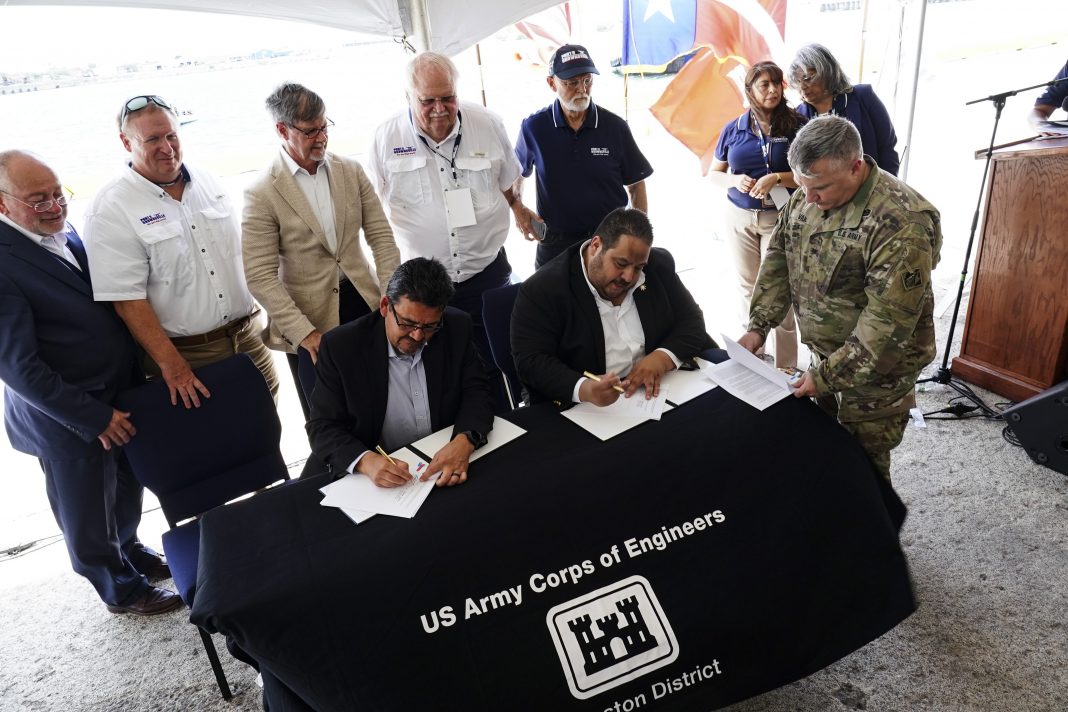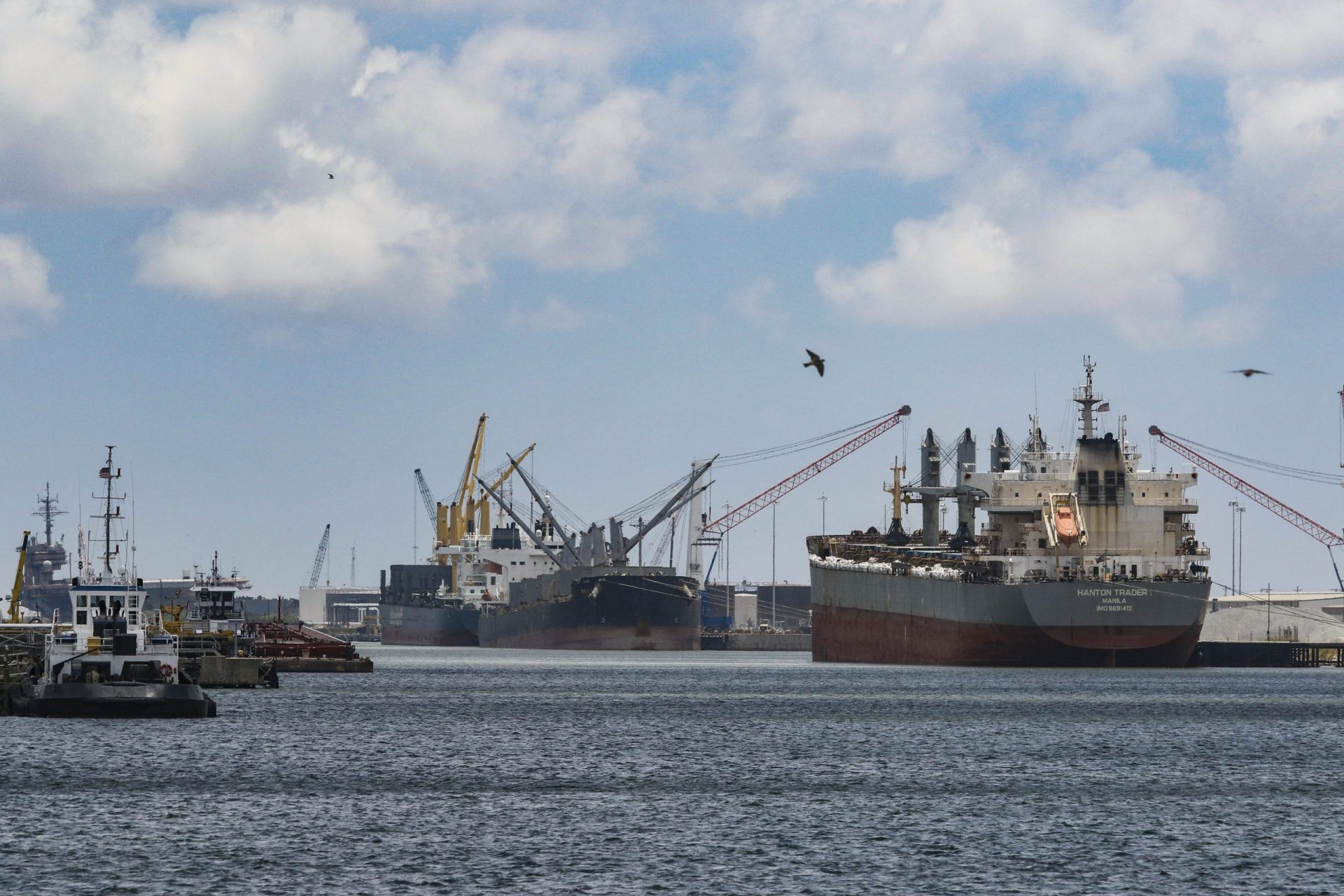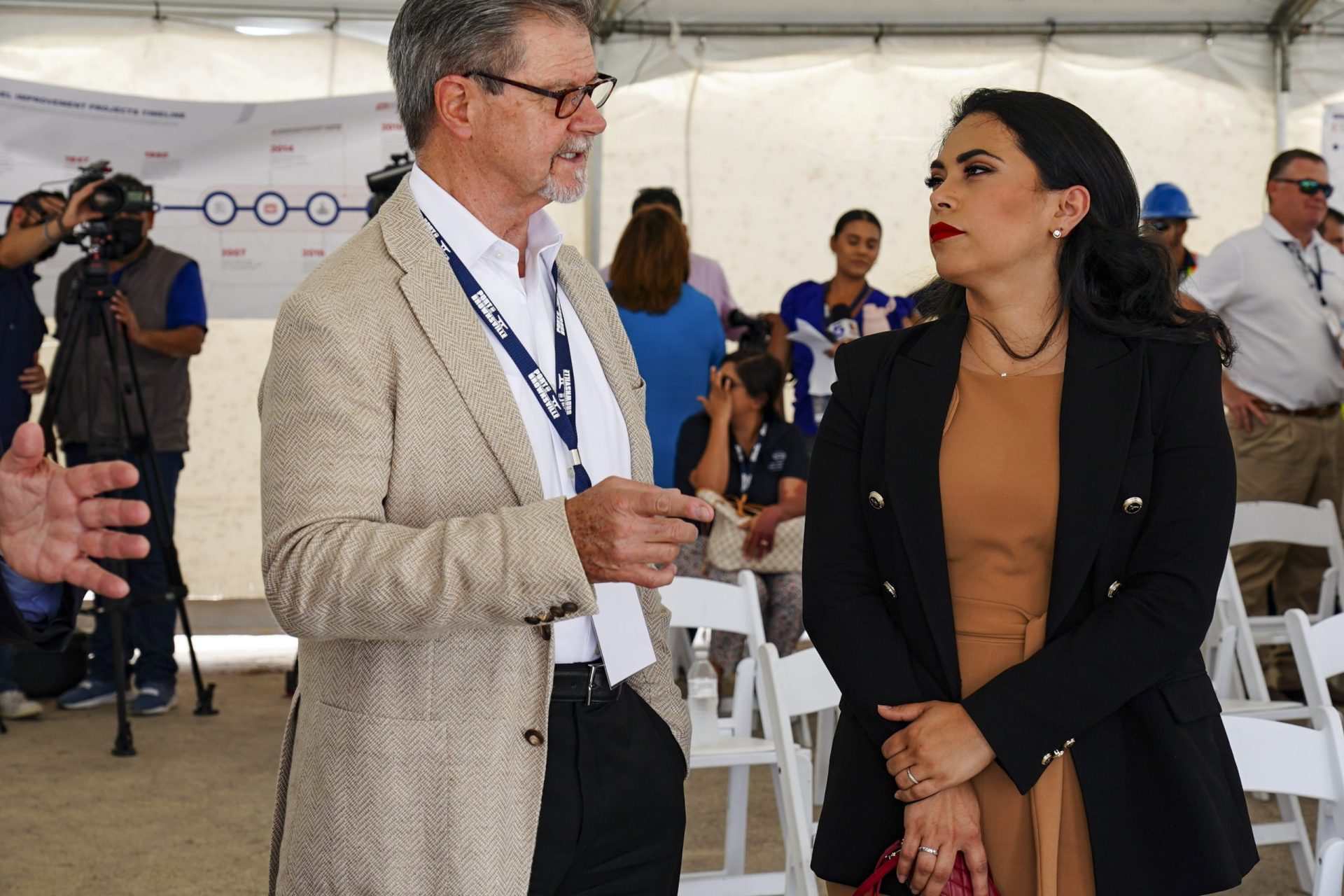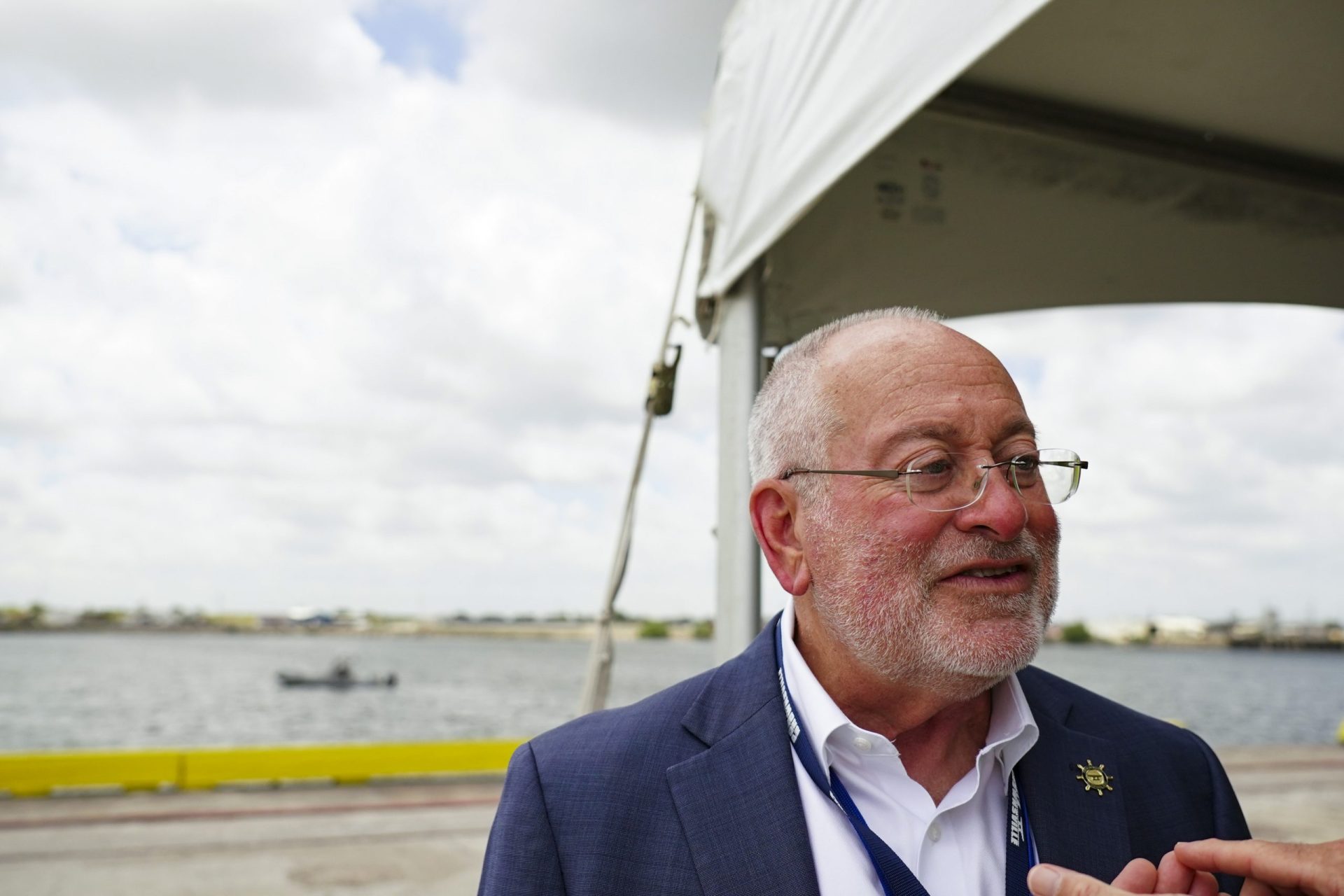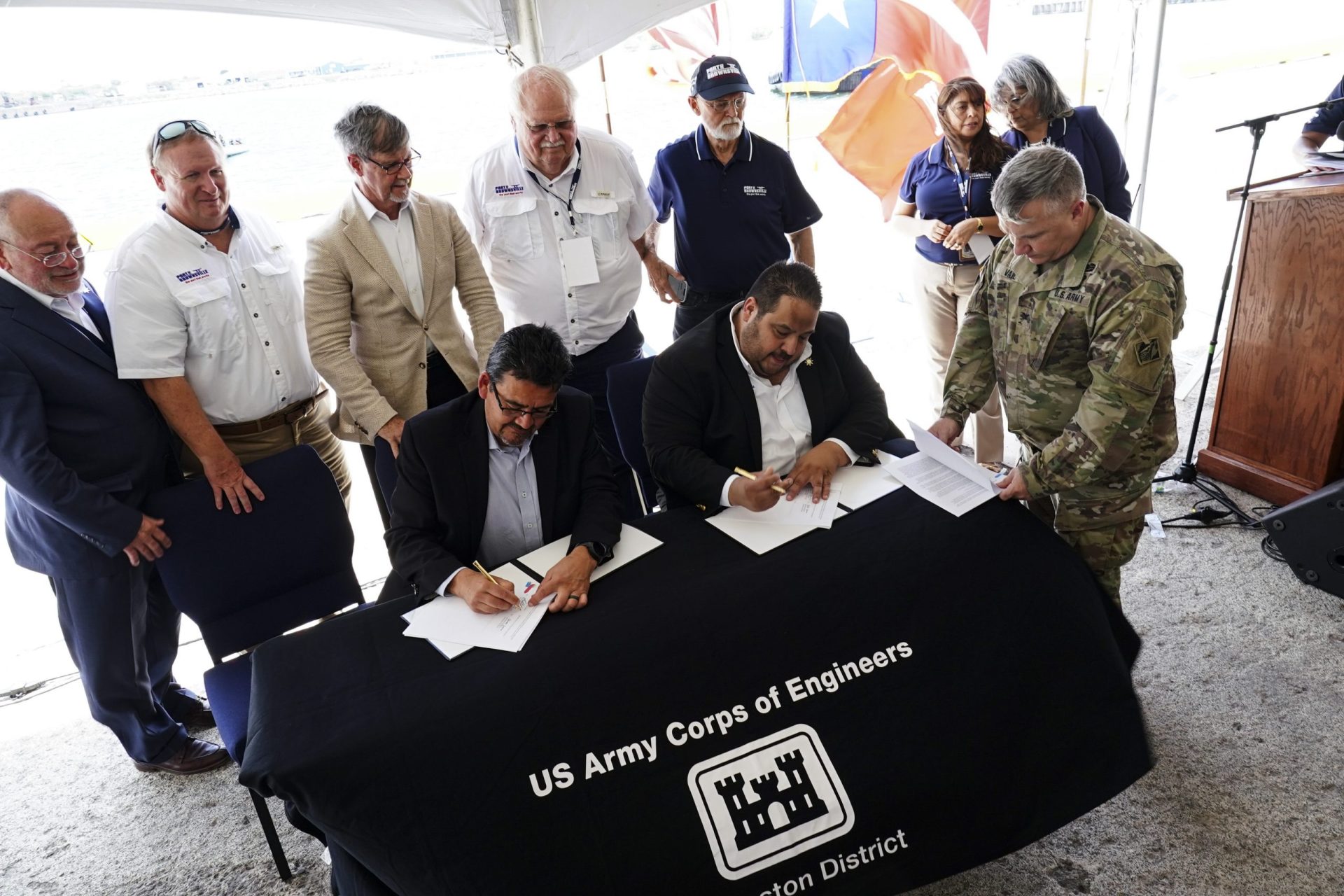The Port of Brownsville’s 15-year quest to deepen its ship channel attained a major milestone Tuesday with the signing of a Project Partnership Agreement between Brownsville Navigation District board Chairman Esteban Guerra and Michael L. Connor, U.S. assistant secretary of the Army for Civil Works.
A ceremony to commemorate the signing took place under a large tent anchored by concrete blocks on a windswept Dock 2 overlooking the Brownsville Ship Channel turning basin, where a Texas Parks and Wildlife Department catamaran and a blue-and-white harbor tugboat — each 80 feet in length — had maneuvered into position to witness the proceedings.
A number of federal, state and county elected leaders were in attendance along with port and BND officials, representatives from the U.S. Army Corps of Engineers, Texas Department of Transportation and many others.
The Brazos Island Harbor Channel Improvement Project, USACE’s official name, will deepen the ship channel from the current 42 feet to 52 feet, enabling the port to accommodate today’s larger, heavier cargo vessels while also enhancing navigational safety, according to officials.

Port Director and CEO Eduardo Campirano said BND commissioners were already talking about how to deepen the channel when he came onboard in 2007, and that getting the project to the point it finally reached Tuesday was one of the first items on his to-do list. He described it as a “very important moment in the history of the Port of Brownsville.”
“There were a lot bumps along the way, but I will commend the commission for never losing sight,” Campirano said. “It’s easy to get fatigued on a project that you’ve been working on for years and years and years and years.”
The deepening project has two phases. Tuesday’s signing concerns phase two, which covers the stretch of the channel from the turning basin to the western boundary of the proposed site of Next Decade’s Rio Grande LNG (liquefied natural gas) export terminal.
In March, the federal government announced the allocation of $68 million in funding for that portion of phase two. The money is being made available through the bipartisan Infrastructure Investment and Jobs Act, which includes among its prioritizes strengthening port and waterway supply chains.
“The funding typically comes from another source,” Campirano said. “In this particular case it came out of the Jobs Act. That was a great shot in the arm to get this thing going.”
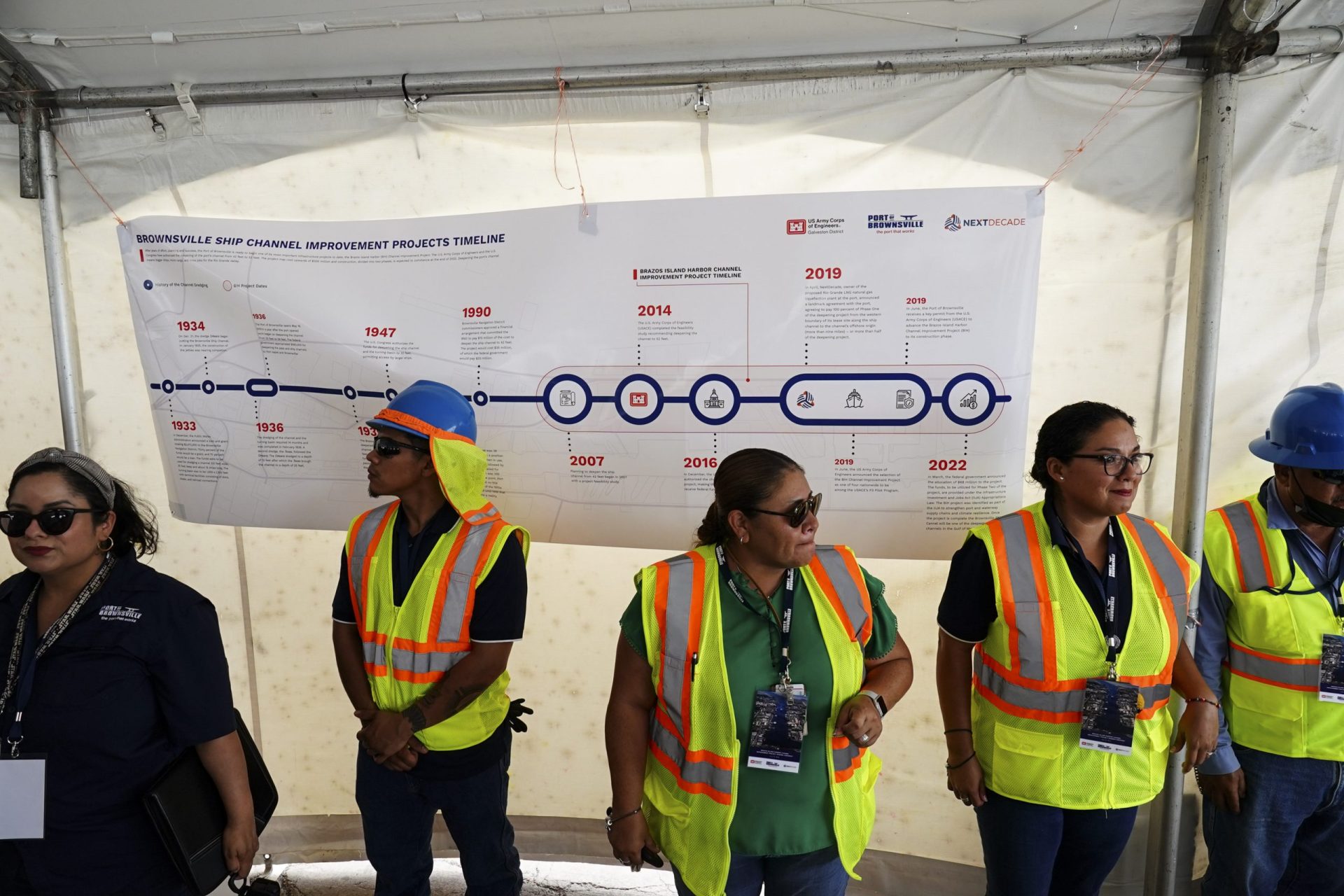
Work on raising the levees will begin late this year or early next year, while USACE aims to award the contract for the actual channel dredging by July 2023, he said. Phase one of the deepening project, from Rio Grande LNG’s western boundary to the Gulf of Mexico, is to be paid for by NextDecade per a 2019 agreement with the port, contingent on the company making a final investment decision to build its LNG plant.
Campirano said the entire project should take 32 to 36 months to complete. Meanwhile, this is the first time USACE has partnered with a port and a private company to accomplish this kind of navigation project, he said.
BND Chairman Guerra predicted that the project “will undoubtedly not only shape the course of our future but also the economic landscape of this region.” He said it had been a “long and arduous effort” since the BND commission authorized port staff in 2007 to come up with a strategy for deepening the channel.
Guerra noted that BND Vice Chairman Ralph Cowen and fellow commissioners John Reed and Sergio Tito Lopez were part of the effort since the beginning, while he and BND Secretary John Wood joined in upon being elected to the commission.
“In fact, Commissioner Wood was instrumental in the process as he was the commission liaison between port staff and the (USACE),” Guerra said. “Together, along with the great leadership of Mr. Campirano and our committed and experienced staff, we have worked tirelessly to make this project a reality as we continue to the course of establishing a vital and dynamic center of industrial, commercial and shipping activity in South Texas.”
Assistant Secretary Connor said the port’s expanded capacity as a result of channel deepening is expected to create 4,900 new jobs, adding that USACE is spending hundreds of millions of dollars on projects at ports and harbors up and down the Texas coast.
“This is a wonderful project. … Needless to say I am absolutely proud and honored to be here to sign the agreement on behalf of the Corps,” he said.

